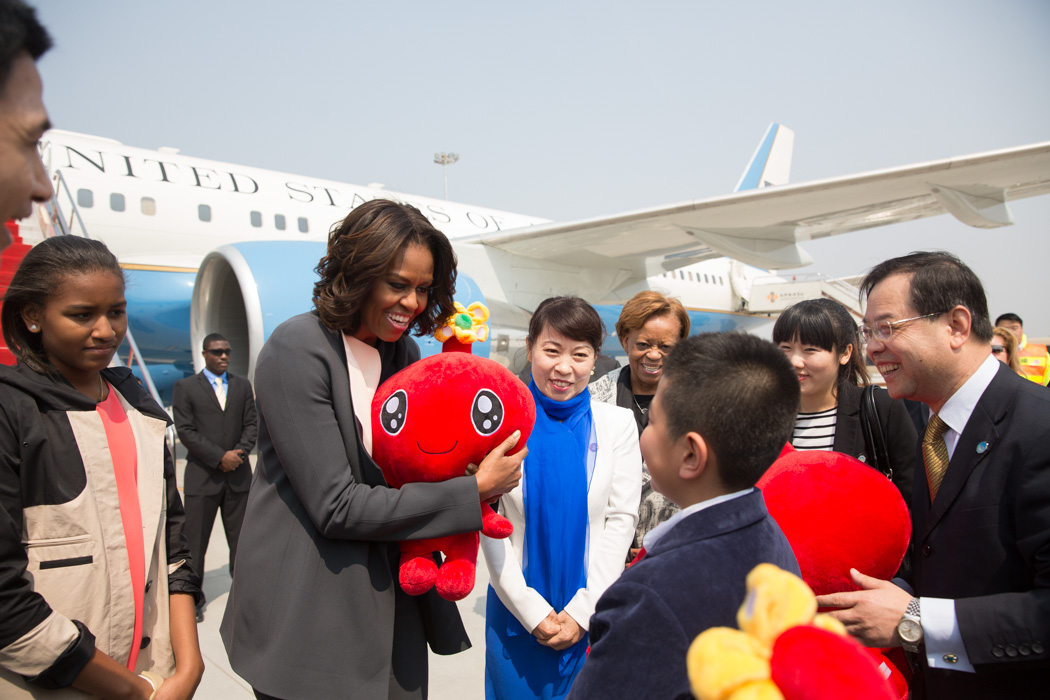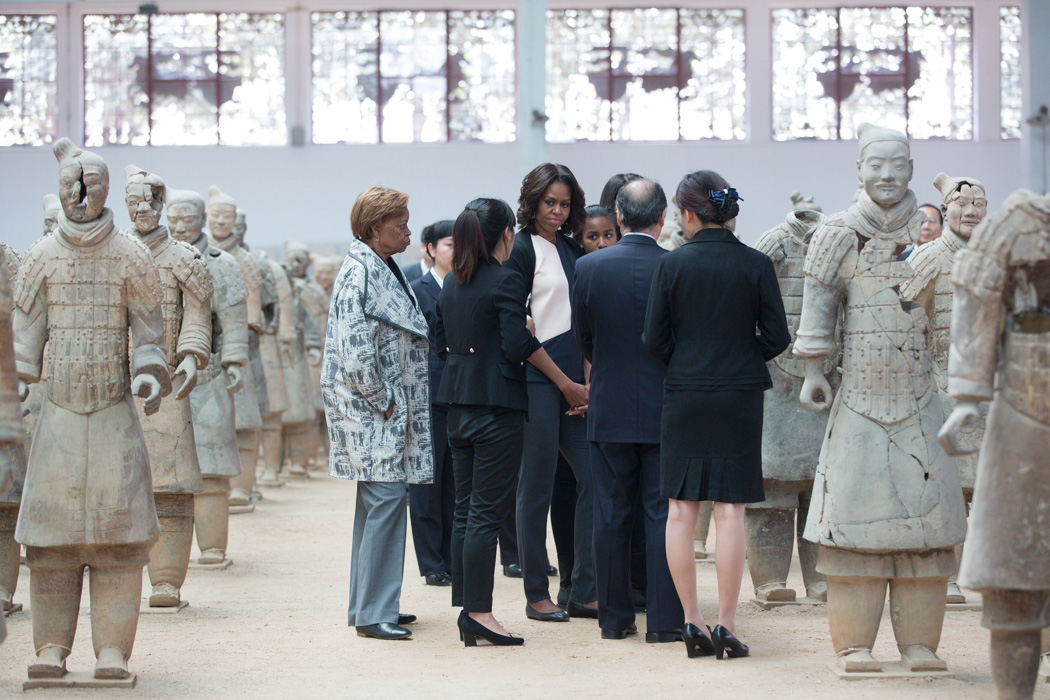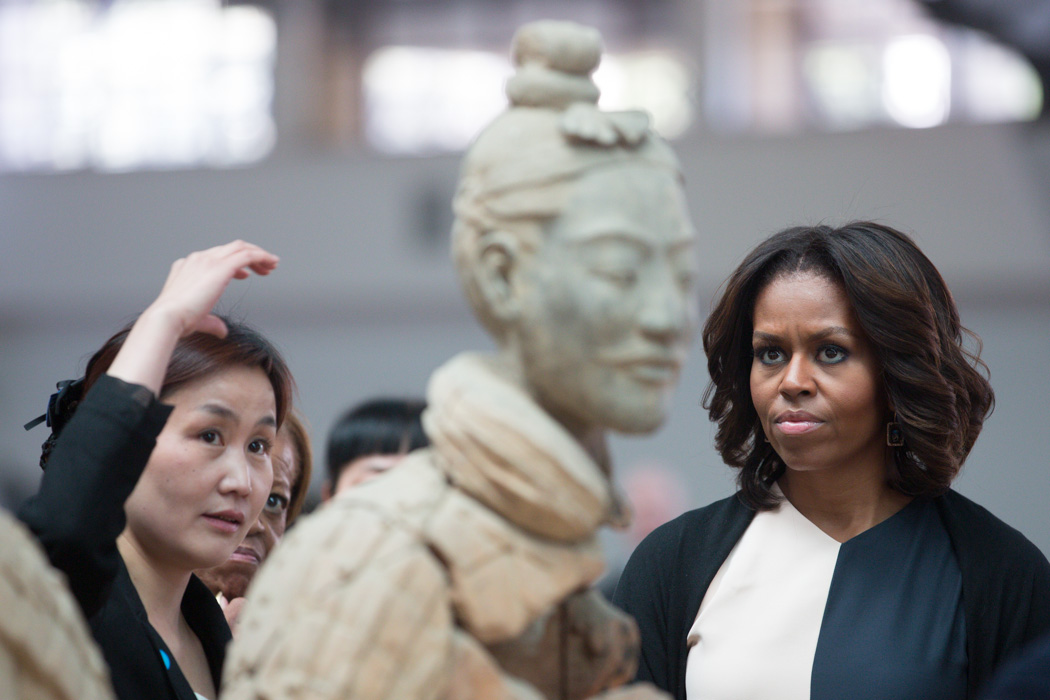
Note: This post is part of a series authored by First Lady Michelle Obama to share her visit to China with young people in the U.S. You can read all of the First Lady's posts at WhiteHouse.gov/First-Lady-China-Trip.
This morning we left Beijing and flew for about two hours to Xi’an, a city of more than 7 million people in central China. If Xi’an were in America, it would be the second-largest city in the country – trailing only New York City – but in China, a nation of more than 1 billion people, Xi’an isn’t even in the top ten.
After we arrived at the Xi’an Airport, we traveled to see the Terra Cotta Warriors, an underground army of thousands of life-sized soldiers made from terra cotta clay. These sculptures were hand-made over 2,000 years ago. They surround the tomb of China’s first emperor, and it’s believed that they were created to protect him in the afterlife.
Scientists estimate that there are about 8,000 warriors in three different pits – and many of those warriors remain buried underground. I actually had a chance to stand face-to-face with some of the warriors, and I saw that each one is incredibly unique, complete with its own lifelike facial expressions. Some have beards and mustaches, and others have weapons like swords or spears. Each one stands about six feet tall and can weigh more than 600 pounds. Today, the warriors are primarily an army of gray – the color of the clay – but you can still see tiny remnants of what once was colorfully painted armor and clothing.
When you realize how carefully built each soldier is and how detailed their faces and weapons are; and when you learn that each arm, hand, leg and head was created separately, it’s no surprise that scientists believe that it took more than 30 years and 700,000 workers to build this army.
Still, perhaps the most amazing thing about the Terra Cotta Warriors is that for two thousand years, they were a complete secret. The warriors were buried and forgotten until 1974, when a group of farmers found the head of one of the soldiers when they were looking for a good spot to dig a water well. That led archaeologists to uncover the underground army, which included not only clay soldiers, but also clay horses, wooden and bronze chariots and treasures of jade and gold. The warriors were broken into pieces and had to be painstakingly pieced back together again.
Today, we saw both warriors that had been restored and many that were still in pieces (and we saw several archaeologists down in one of the pits gently unearthing even more warriors).
In the years since the Terra Cotta Warriors were discovered, the Chinese government built a museum that has allowed millions of tourists to visit them. A few of the soldiers have even been exhibited outside of China. In fact, four years ago, 15 of them were shipped to Washington D.C. and put on exhibit at the National Geographic Museum, where visitors could come and see them face to face just like I did today.





